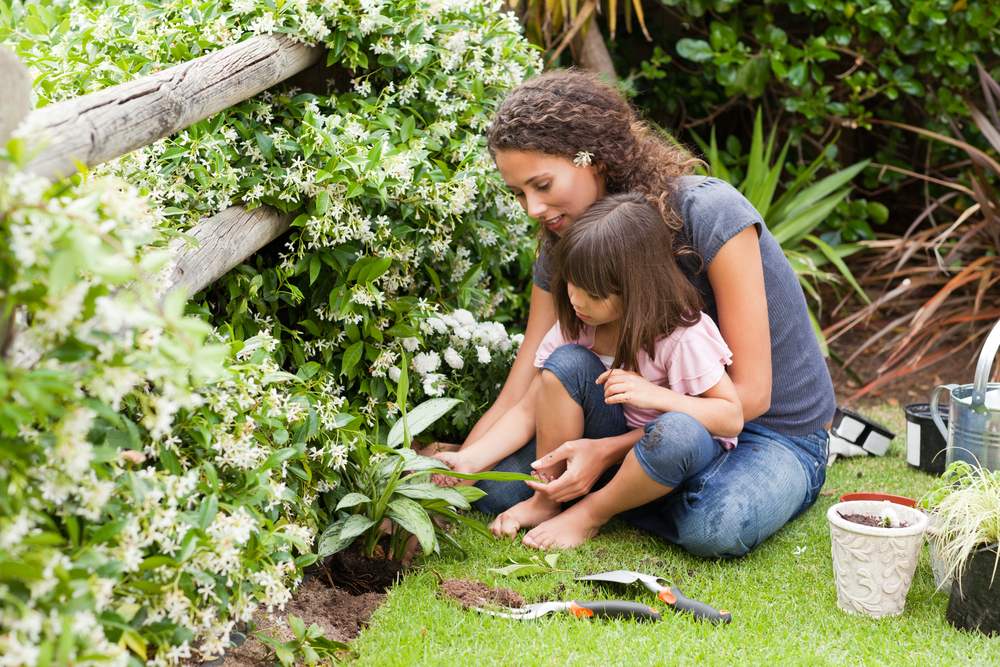
Pollinators like bees, birds, and bats contribute to the biodiversity and resilience of ecosystems and benefit people. What can we do to protect them?
This video from California Academy of Sciences explains the connection between pollinators and our food.
Before we start Week Five let’s check in on our container planting from last week.
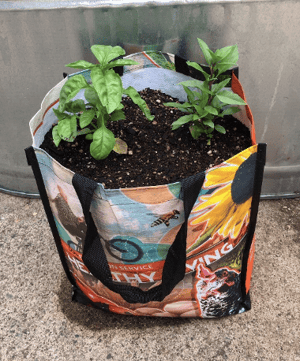 Our basil plants are starting to grow!
Our basil plants are starting to grow!
You can harvest basil all summer by pinching back the plant and using the leaves.
Try to keep your basil from flowering.
Once it starts to produce flowers the leaves can taste bitter.
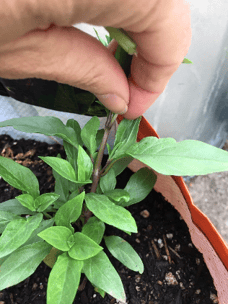
Find a place on the stem where branches are forming.
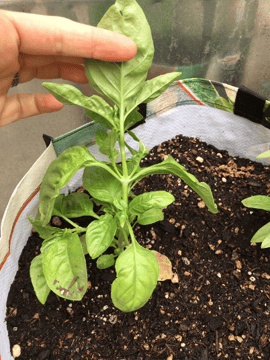
Use your fingers, or a pair of scissors, to pinch the stem.
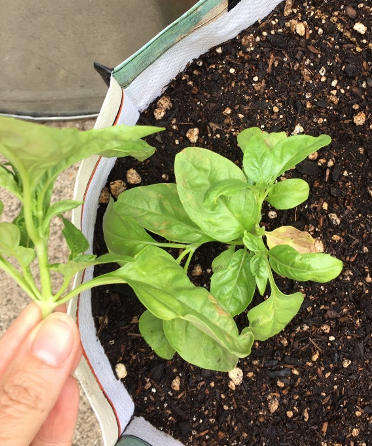
Now new branches will grow and you have a sprig of basil you can add to a salad or another recipe.
Show us how your garden is growing and some of the activities you did last week by uploading pictures to our photo gallery!
When you are out in your yard or garden, do you notice the insects around you?
Most insects are harmless, so before you squash that bug....WAIT!
It is important to learn about the insects in your garden so you can tell the difference between the helpful ones and the harmful ones.
We call the insects that help in the garden beneficial insects.
Click here to see the full size poster of Natural Enemies of Garden Pests.
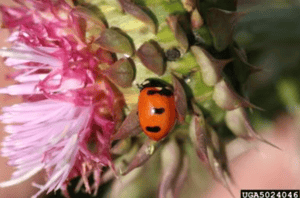 You probably recognize this insect, it’s a ladybug!
You probably recognize this insect, it’s a ladybug!
Ladybugs help in the garden by eating other insects like aphids and scale. One ladybug can eat 5,000 aphids in its lifetime. Aphids are an example of a garden pest.
Pest insects feed on plants and disrupt their growth or harm them in a way that makes them less healthy.
Transverse ladybeetle (Coccinella transversoguttata) Photo Credit: Bradley Higbee, Paramount Farming, Bugwood.org
You might see signs of insect pests like holes in leaves from chewing or tunnels inside the leaf from leafminers. Insects also leave frass (or bug poop) behind.
Check out pages 84-85 in your Jr. MG Handbook to learn more about different signs of insect damage. Hunt for signs of insect damage in your garden and take some pictures.
Can you identify the type of pest that caused the damage?
Share your pictures with us through the gallery upload feature.
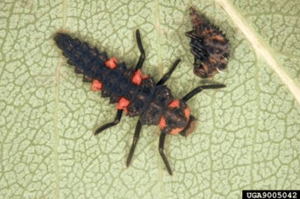 Did you know that this is a ladybug too? Insects go through a process called metamorphosis, which means “change of form.” During metamorphosis, insects change a lot. This is a ladybug larvae and it eats aphids too!
Did you know that this is a ladybug too? Insects go through a process called metamorphosis, which means “change of form.” During metamorphosis, insects change a lot. This is a ladybug larvae and it eats aphids too!Transverse ladybeetle larvae Photo Credit: Whitney Cranshaw, Colorado State University, Bugwood.org
Learn more about beneficial insects with this fun coloring book activity from the Cornell Naturalist Outreach Program!
DID YOU KNOW:
Dragonflies were here before dinosaurs!
They've evolved to have four sets of wings that they can use independently.
Those four wings allow them to be an excellent flier, which allows them to catch their prey while in flight!
A dragonfly's diet consists of numerous insects, including:
Stop and smell the flowers and maybe eat a few too!
How do bees and other pollinators contribute to the food we eat? Pamela Pavek, agronomist with the USDA's Natural Resource Conservation Service, talks about the key role of pollinators in the global food system.
In this video, BEE Friendly, The importance of Pollinators she explains that one out of every three bites of food comes from crops pollinated by insects.
The first stop on the plant for the pollinator is the flower. Can you think of some flowers that we eat? There are many edible flowers. Some edible flowers are obvious, but others are a little harder to detect as they make up the flowering structure of a plant. Cauliflower, broccoli, and artichokes are flowers we eat, just to name a few. We also use flowers like hibiscus, lavender, chamomile and rose in tea and for cooking.
One the healthiest flowers we can eat is broccoli! Broccoli - both the flowers and stalk are edible and are packed full of nutrients that are great for our body like folate, calcium, vitamin K and more!
Try this work sheet from Get Healthy Clark County to test your broccoli knowledge and maybe learn something new.
Need a new favorite song or maybe a good laugh? Check out the fruit veggie swag video!
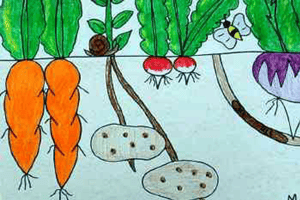 After exploring gardening and Oregon food as part of the Family Food & Garden Club it's time to put your creative skills to the test!
After exploring gardening and Oregon food as part of the Family Food & Garden Club it's time to put your creative skills to the test!
Enter the Youth Art Contest for a chance to win prizes! This is open to anyone entering grades K-6 in the fall.
Tell your friends, brothers and sisters too! You can submit your entry online, by mail or dropping your artwork and registration from off at the Extension office.
Deadline to submit is July 1, 2020.
Our friends at the Oregon Outdoor School Program have some great Nature Observation activities related to pollinators and flowers.
Scroll down to the “Pollinators” and “Flowers” sections where you can find directions for making a Mason Bee home and instructions on dissecting a flower.
Here’s a look at how broccoli is harvested on Oregon.
This video used with permission from Oregon Farm Bureau. You can enjoy broccoli both fresh and frozen. Try it raw with the Food Hero Lemony Garbanzo dip or homemade ranch dressing.
For a ‘chill demonstration’ on how to make Food Hero Cauliflower Tots watch the Oregon Harvest 4 School video AND be an expert video reviewer.
You can make the tots at home using the recipe on page 23 of your Food Hero Cookbook.
See what kind of insects and pollinators you observe in your environment!
With permission from an adult, spend time this week watching and recording what pollinators visit flowering plants around your home, garden, neighborhood or local park.
Record observations in a chart and analyze the data you collect to see what you can learn about the pollinators in your environment.
Materials needed:
Source: Good Bugs: Edible Hudson Valley & Cornell University
Directions:
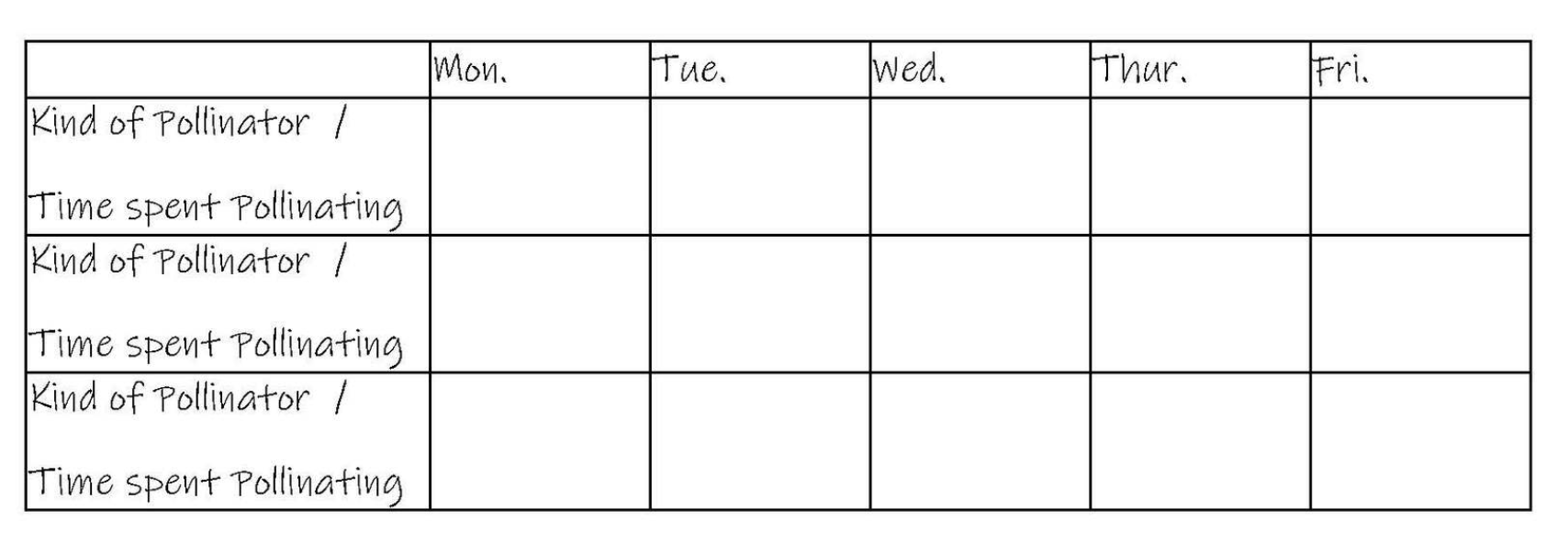
If you want to put your observation skills to work you can become a Citizen Scientist with The Great Sunflower Project – https://www.greatsunflower.org/node/1000010
Parents, if you want to learn more about managing pests in your garden, check out Chapter 5 in the Seed to Supper Handbook and watch this Seed to Supper presentation from the Benton County Master Gardeners.
This week we explored the essential relationship between flowers and pollinating insects to our food supply. To celebrate this connection try a recipe featuring a flower that we eat! Cauliflowers Tots recipe is on page 23 in the Food Hero cookbook you received in your kit.
True Food TV shares interesting facts about growing, harvesting and eating cauliflower. This clip also highlights how farmers attract and use pollinating insects in largescale farming.
(shared with permission of True Food TV)
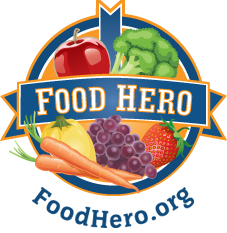 You can sort recipes on the Food Hero website to find those that are Kid Approved. This means at least 25 kids have tasted the recipe and at least 70% of the kids who tried “Liked” the taste.
You can sort recipes on the Food Hero website to find those that are Kid Approved. This means at least 25 kids have tasted the recipe and at least 70% of the kids who tried “Liked” the taste.
We hope your kids will, too! Follow this link to check out the kid approved recipes https://foodhero.org/recipes/categories/1406
Here are more favorite Food Hero recipes that feature flowers we eat:
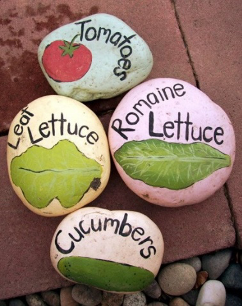 Family members of all ages will enjoy relaxing and being creative together with this activity.
Family members of all ages will enjoy relaxing and being creative together with this activity.
Gather a few smooth river rocks, some acrylic paints, brushes or gel pens and have fun painting rocks with messages, or to use for garden markers, decoration, a doorstop or for gifts!
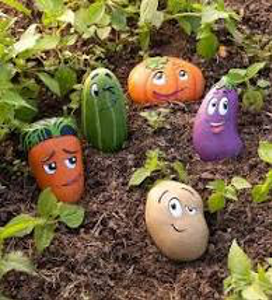 Families- be sure to log into the Family Food and Garden website next week to learn how to receive your family gift certificate to use at the Grants Pass Growers Market where you can purchase fresh locally grown fruits and veggies. Its berry season in Oregon – don’t miss out!
Families- be sure to log into the Family Food and Garden website next week to learn how to receive your family gift certificate to use at the Grants Pass Growers Market where you can purchase fresh locally grown fruits and veggies. Its berry season in Oregon – don’t miss out!
